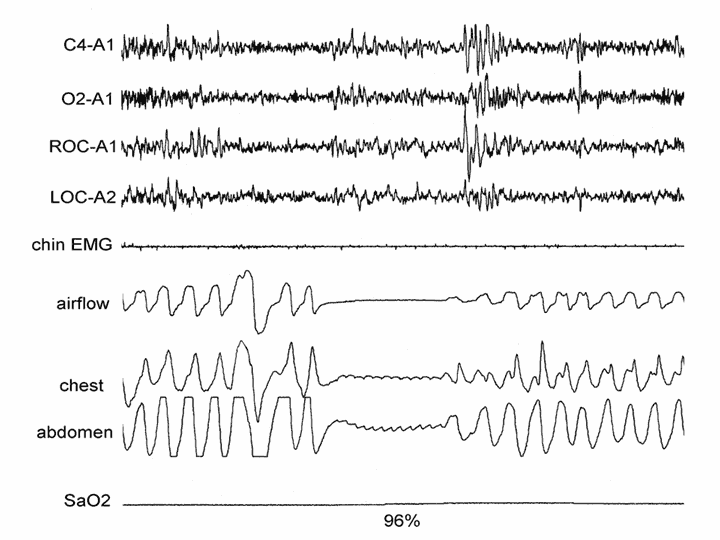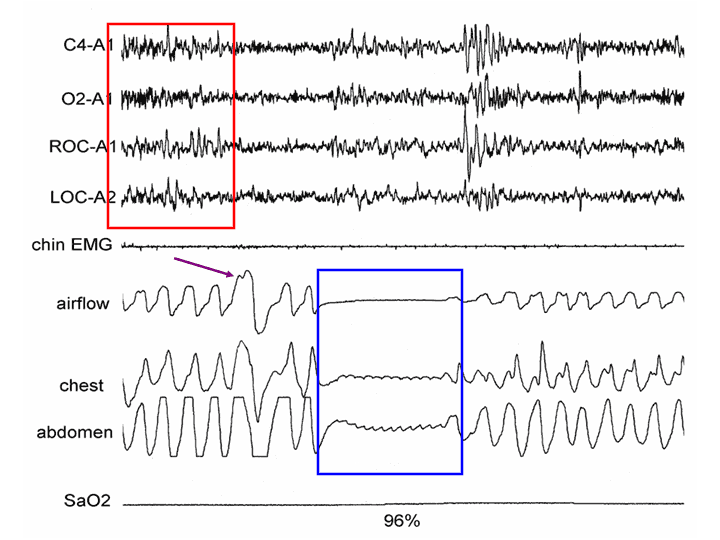Arousal triggered respiratory event
Contributed by Atul Malhotra, MD
Sleep transition central apnea.
- The recording shows initially an arousal in the electroencephalogram (bordered by the red box) based on three seconds of alpha activity.
- There is then evidence of a robust ventilatory response to arousal based on a single large breath (arrow) following the EEG arousal.
- This hyperventilation then leads to a central apnea (bordered by the blue box) since the CO2 is lowered below the CO2 apnea threshold. Note the absence of airflow without respiratory effort defining central apnea.
- This pattern is a very common one and does not necessarily represent underlying pathology, since spontaneous arousals are common in otherwise healthy individuals.
- Patients are frequently mis-diagnosed with neurological disease since the central apneas are incorrectly attributed to brain stem pathology.
- The treatment for this problem is frequently reassurance. However, if there are underlying causes for recurrent arousals (such as periodic limb movements, obstructive apnea, physical pain, sleep maintenance insomnia), these can be addressed.
References
- Eckert, D. et al., Central Sleep Apnea: Pathophysiology and Treatment, Chest 2007, 131: 595-607.
- Xie A, Wong B, Phillipson EA, Slutsky AS, Bradley TD. Interaction of hyperventilation and arousal in the pathogenesis of idiopathic central sleep apnea. Am J Respir Crit Care Med 1994;150:489-495.





